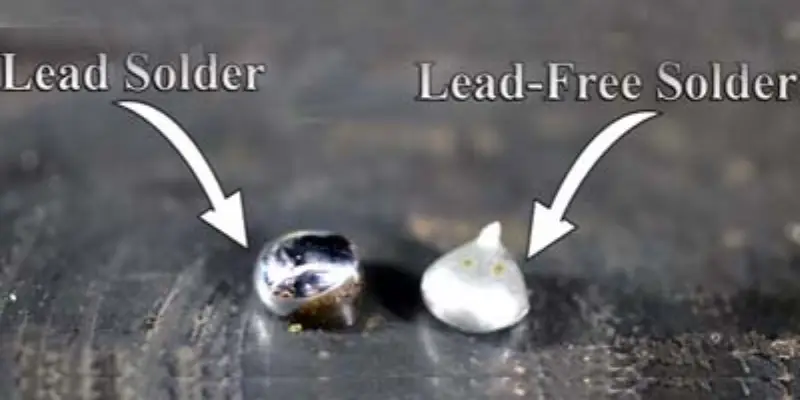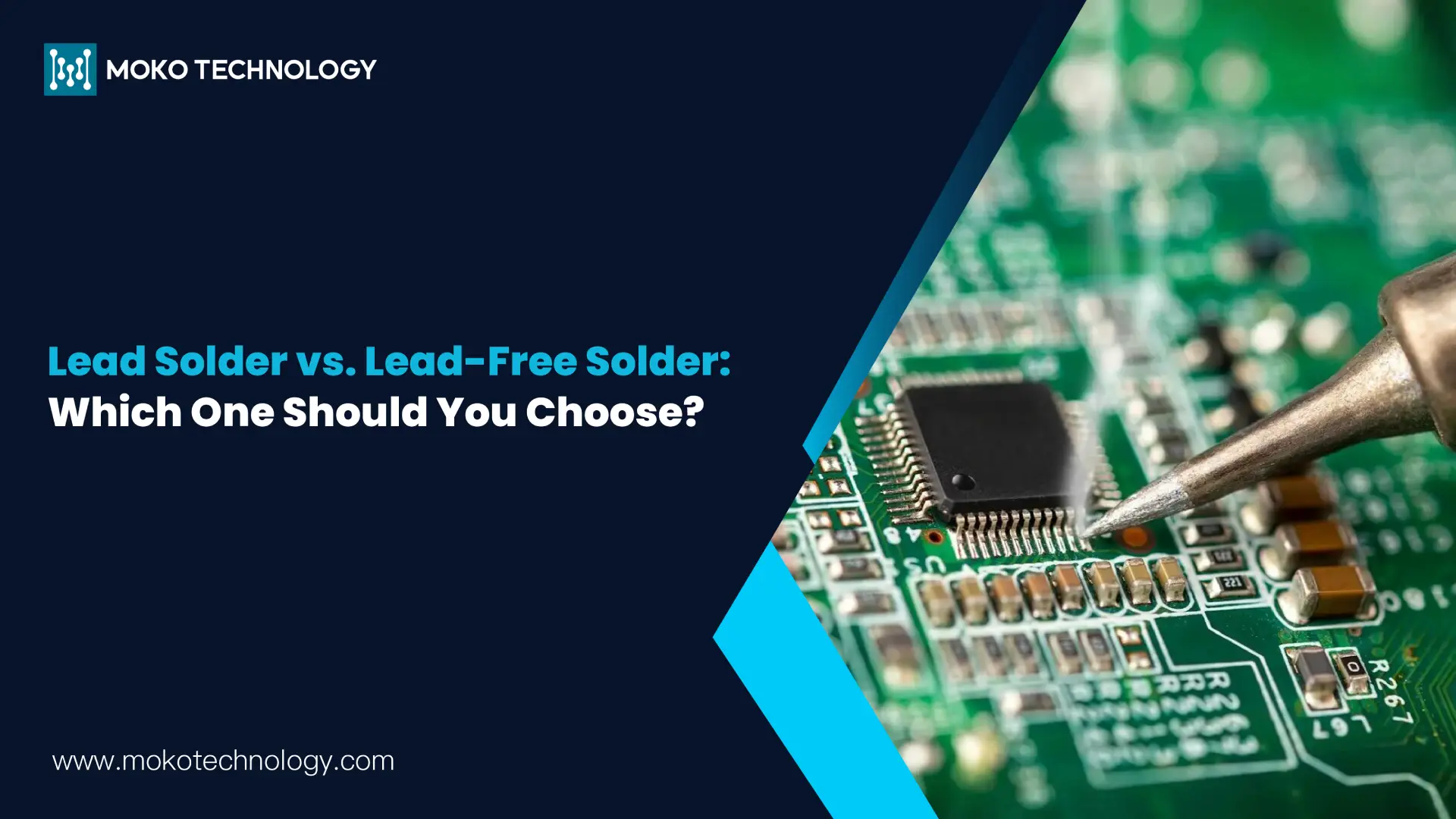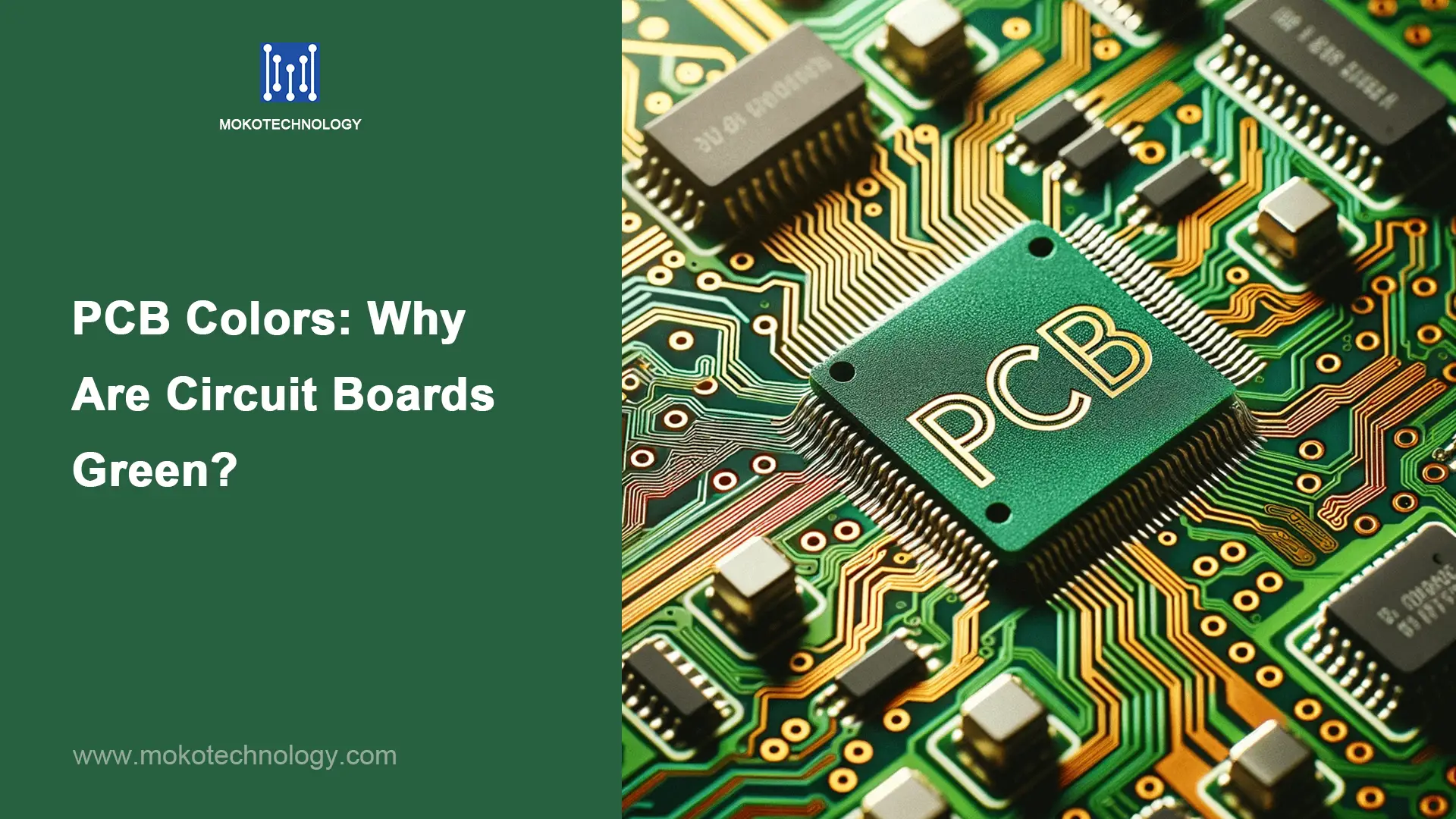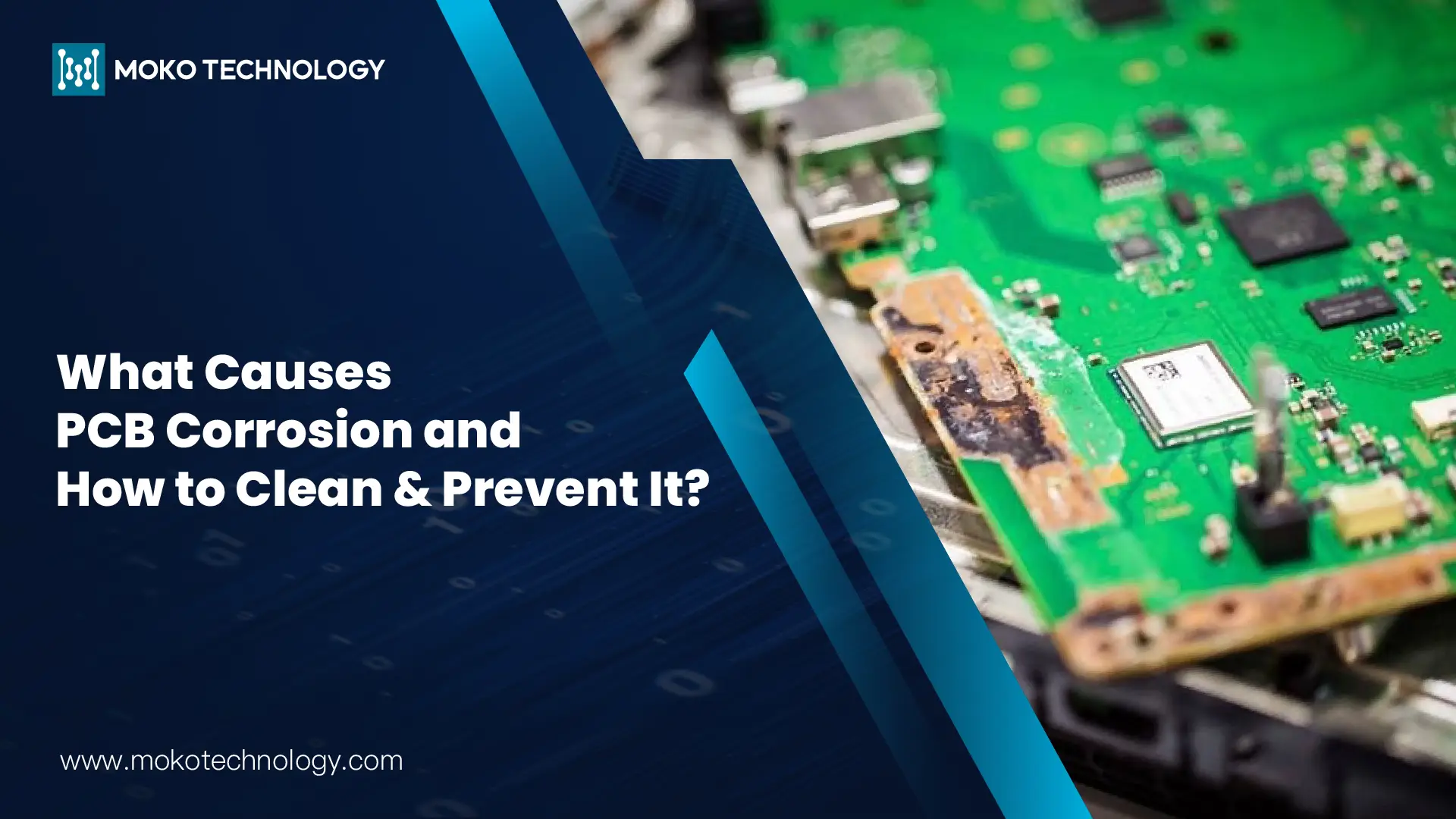Por edades, La soldadura de plomo, que se fabrica principalmente con aleaciones de estaño y plomo, se ha utilizado ampliamente debido a su bajo punto de fusión.. Sin embargo, Las preocupaciones sobre la salud y el medio ambiente han hecho que la industria opte por productos sin plomo.. El impulso para este cambio ha sido orquestado por regulaciones como RoHS (Restricción de sustancias peligrosas), particularmente en el mercado europeo, para reducir el contenido peligroso en los aparatos electrónicos. En este blog, Exploraremos las diferencias clave en el debate entre soldadura de plomo y. soldadura libre de plomo, examinando sus propiedades, ventajas, para ayudarle a tomar una decisión informada para su próximo proyecto.
¿Qué es la soldadura con plomo??
La soldadura de plomo ha sido el caballo de batalla de montaje electronico a lo largo de muchas décadas. Está hecho principalmente de estaño y plomo., aunque el estaño está presente en proporciones mayores que el plomo en la mayoría de los casos, normalmente representando 60% de la aleación mientras que el plomo será 40%. Tiene varias ventajas como el bajo punto de fusión., bajo costo, y fácil de usar. sin embargo, el plomo es venenoso, Esta sustancia peligrosa tiene muchos aspectos negativos para la salud humana de las personas que trabajan con ella.. También contamina el suelo y el agua., lo que hace que la eliminación de dichos productos que contienen plomo sea un gran problema.
¿Qué es la soldadura sin plomo??
Los intentos de utilizar soldadura sin plomo se deben principalmente a los impactos que tiene en la salud humana y en el medio ambiente.. Las soldaduras sin plomo contienen estaño y pueden tener adiciones de plata. (Ag), cobre (Cu), y/o bismuto (Bi). Los materiales de soldadura que no contienen plomo cumplen con los marcos legales globales., a saber, RoHS, Reducir los riesgos para la salud de los trabajadores y consumidores.. Tienen limitaciones como un alto punto de fusión y cuestiones relativas a la fiabilidad..
Soldadura con plomo versus soldadura sin plomo: Comparando las diferencias clave

- Puntos de fusión: La soldadura de plomo tiene una temperatura de fusión más baja., así es más fácil trabajar con. Mientras que la soldadura sin plomo requiere temperaturas más altas, planteando desafíos en la gestión térmica.
- Conductividad eléctrica: Ambos ofrecen buena conducción eléctrica, aunque la soldadura sin plomo actual podría tener una resistencia ligeramente mayor atribuida a la falta de partículas de plomo..
- Fuerza mecánica: Soldaduras sin plomo, en la mayoría de los casos, crear uniones de soldadura con menor ductilidad que las uniones de soldadura con plomo. Significa que las uniones de soldadura sin plomo son más frágiles y más propensas a fallar cuando el objeto está bajo tensión o sufre un ciclo térmico..
- Confiabilidad y Durabilidad: Las uniones de soldadura con plomo generalmente tienen menos probabilidades de ser sensibles al estrés y la fatiga en comparación con las uniones de soldadura sin plomo.; Esto último plantea un gran desafío a la hora de diseñar productos que requieren más pruebas., especialmente bajo condiciones de fuerza.
- Capacidades de humectación: La soldadura con plomo tiene mejores características de humectación que la soldadura sin plomo., lo que mejora la formación de mejores articulaciones. Si bien la soldadura sin plomo puede reducir la cantidad de materiales tóxicos utilizados en el proceso, generalmente están mucho menos humedecidos.
- Costo: La soldadura de plomo es menos costosa principalmente porque es más fácilmente accesible y comparativamente más fácil de fabricar., Mientras que las soldaduras sin plomo son relativamente costosas en términos de materias primas y requieren herramientas y aparatos costosos para su uso..
- Preocupaciones de salud: El plomo es peligroso para la vida y la salud humana, mientras que las soldaduras sin plomo ayudan a proteger a las personas de sus impactos negativos., hacer las condiciones de trabajo más seguras, y disminuir la probabilidad y los efectos de la contaminación por plomo..
| Propiedad | Soldadura de plomo (Sn-Pb) | Soldadura libre de plomo |
| Punto de fusion | Más bajo (183°C para Sn63/Pb37) | Más alto (217-227°C para aleaciones comunes) |
| Conductividad eléctrica | Ligeramente mejor | Ligeramente menor |
| Fuerza mecánica | Más dúctil | menos dúctil, mas quebradizo |
| Confiabilidad y Durabilidad | Más indulgente con el estrés y la fatiga | Requiere un diseño y pruebas cuidadosos |
| Capacidades de humectación | Superior | Propiedades humectantes más pobres |
| Crecimiento del bigote de estaño | Menor riesgo | Riesgo mayor, dependiendo de la aleación |
| Impacto medioambiental | Alta toxicidad debido al contenido de plomo. | Menor toxicidad, pero algunos componentes pueden ser peligrosos |
| Costo | Generalmente más bajo | Generalmente más alto |
| Preocupaciones de salud | Tóxico, plantea riesgos para la salud | Más seguro, sin contaminación por plomo |
| Conductividad térmica | 50 (W / metro) * 1 k * 1 s | 73(W / metro) * 1 k * 1 s |
Soldadura con plomo versus soldadura sin plomo: Como escoger?
Ahora que entendemos las ventajas y desventajas de la soldadura con plomo y la soldadura sin plomo., surge la pregunta: cual deberías elegir? Hay una serie de cosas que se deben considerar antes de tomar la decisión final..
Cumplimiento normativo
Si su gobierno prohibiera el uso de plomo, o si los productos que estás desarrollando se venderán en países europeos que siguen la directiva RoHS, Realmente no hay otro camino a seguir que usar soldadura sin plomo..
Necesidades de aplicación
Los requisitos de su proyecto pueden desempeñar un papel importante a la hora de definir qué tipo de soldadura planea utilizar.. Por ejemplo, aeroespacial, La electrónica de aviónica y médica seguirá prefiriendo la soldadura de plomo.. Ha sido bien probado y demostrado que mantiene una alta confiabilidad incluso en los entornos más hostiles.. Mientras que los productos de consumo que no se preocupan mucho por la confiabilidad comprometerán las soldaduras sin plomo para cumplir con las regulaciones..
Compatibilidad del equipo
La soldadura de plomo puede plantear algunos problemas de compatibilidad con los equipos existentes.. Para soldadura sin plomo, es necesario actualizar máquinas con altas temperaturas de trabajo, incluida la soldadura de plomo puede plantear algunos problemas de compatibilidad con los equipos existentes.
Consideraciones de costos
Aunque la soldadura de plomo es relativamente más barata, los gastos totales teniendo en cuenta otros factores, incluidos los riesgos para la salud, Sanciones por infringir las leyes sin plomo., y también se debe tener en cuenta el coste de cambiar a productos sin plomo.
Fiabilidad a largo plazo
La durabilidad de las uniones soldadas es un factor importante en el éxito a largo plazo del producto.. También es importante en el producto que experimentará condiciones ambientales adversas.. Las uniones de soldadura sin plomo pueden ser más sensibles que las uniones que contienen plomo y pueden requerir otras pruebas y controles de calidad..
Pensamientos finales
La soldadura de plomo se ha utilizado a lo largo de los años debido a su confiabilidad y relativa simplicidad.. sin embargo, La soldadura sin plomo está ocupando lentamente su lugar debido a preocupaciones ambientales y a implicaciones menos peligrosas para la salud.. En conclusión, mientras que se ha descubierto que la soldadura con plomo tiene una alta confiabilidad en comparación con la soldadura sin plomo, Las tendencias futuras en la industria electrónica se caracterizarán por soldaduras respetuosas con el medio ambiente.. La decisión de continuar usando soldadura con plomo o cambiar a soldadura sin plomo variará de un proyecto a otro debido a limitaciones como las normas existentes., y costo versus confiabilidad.




